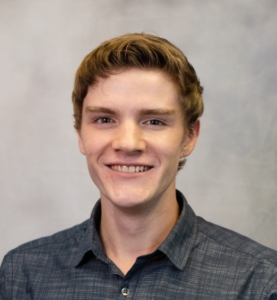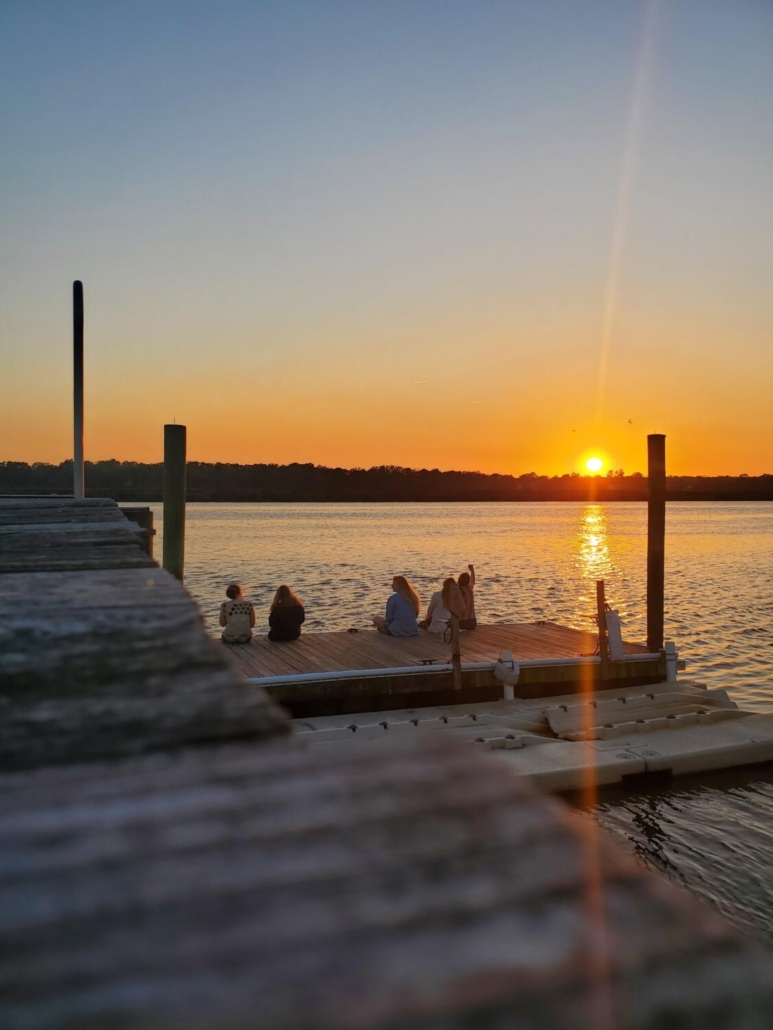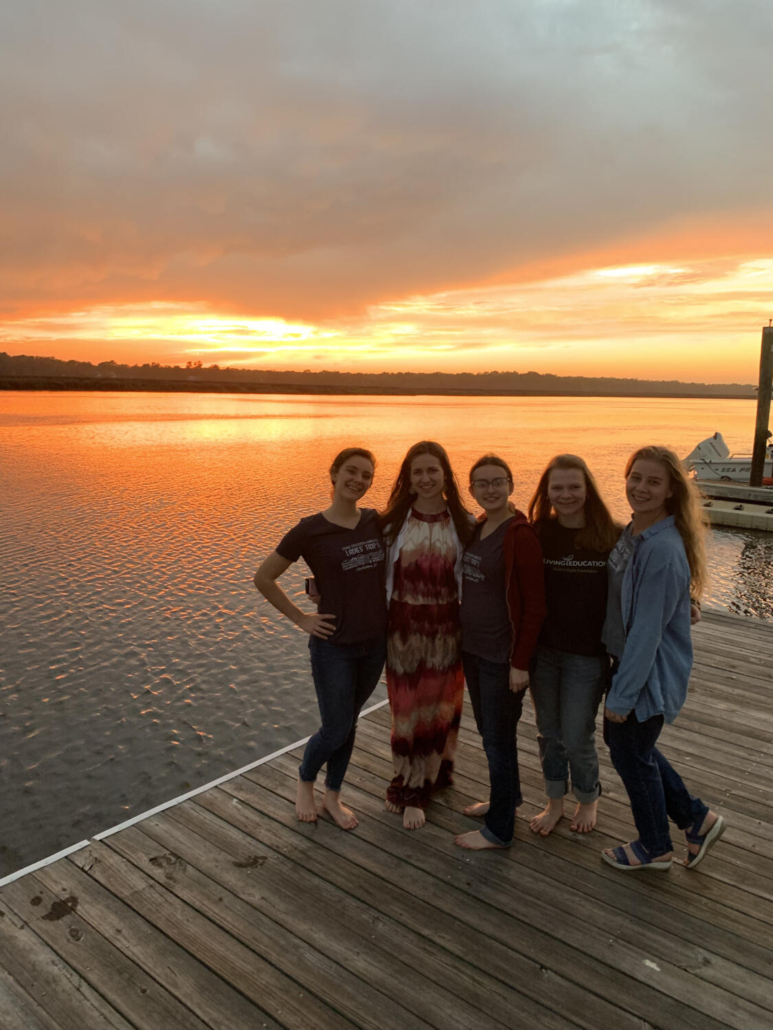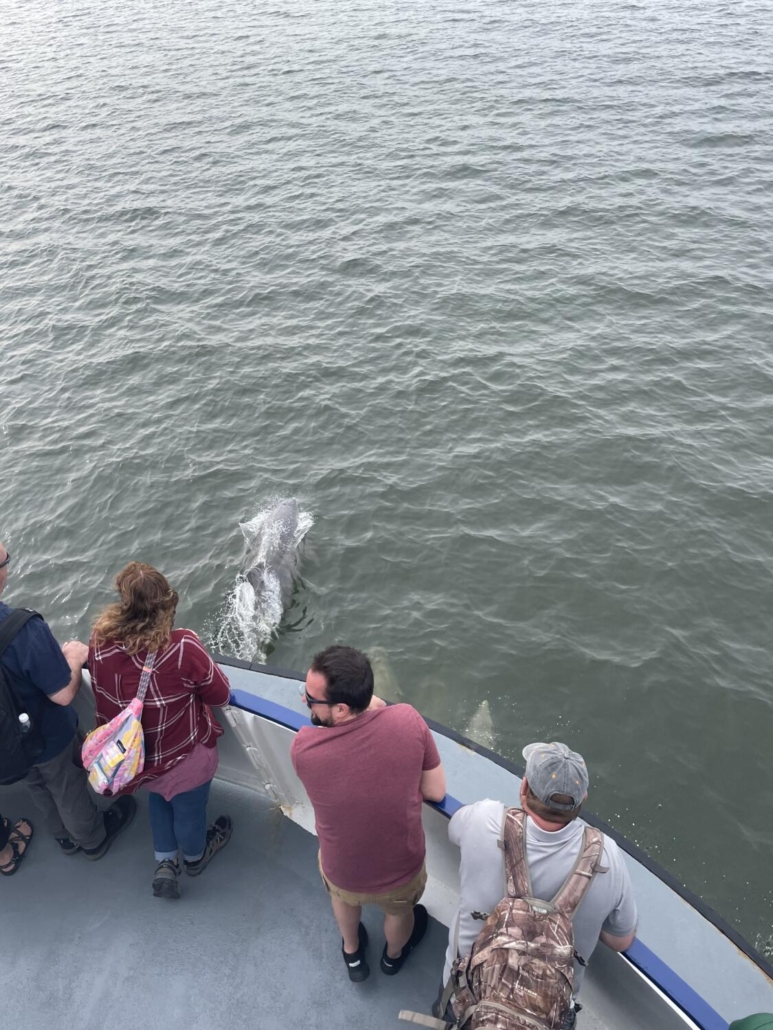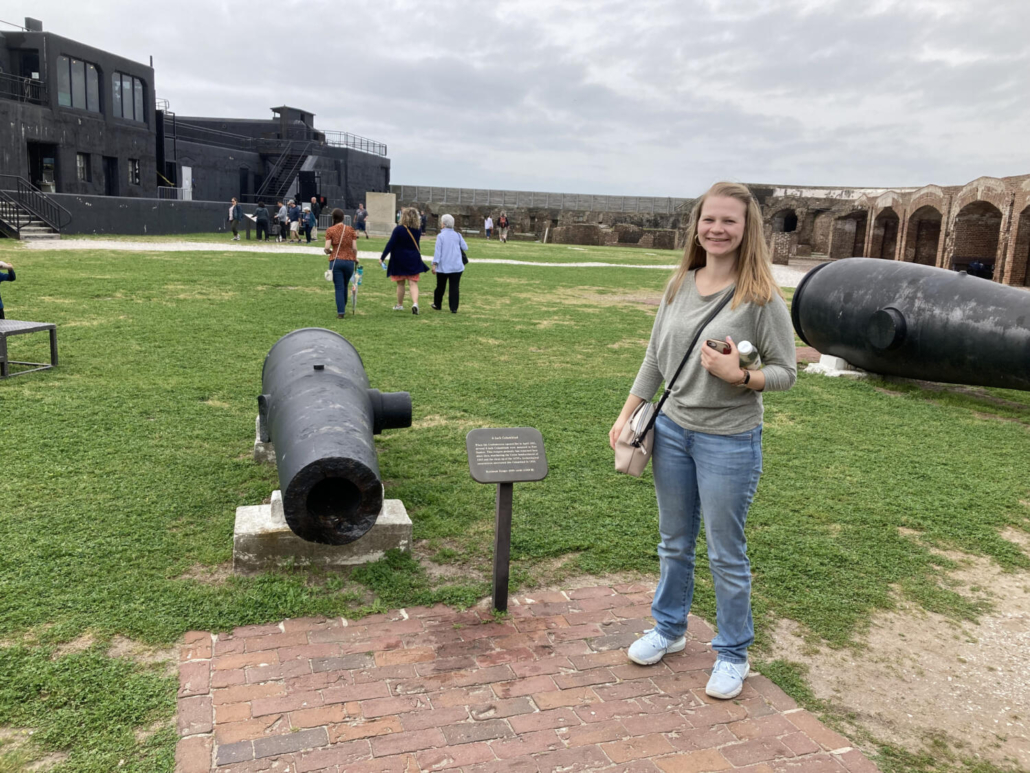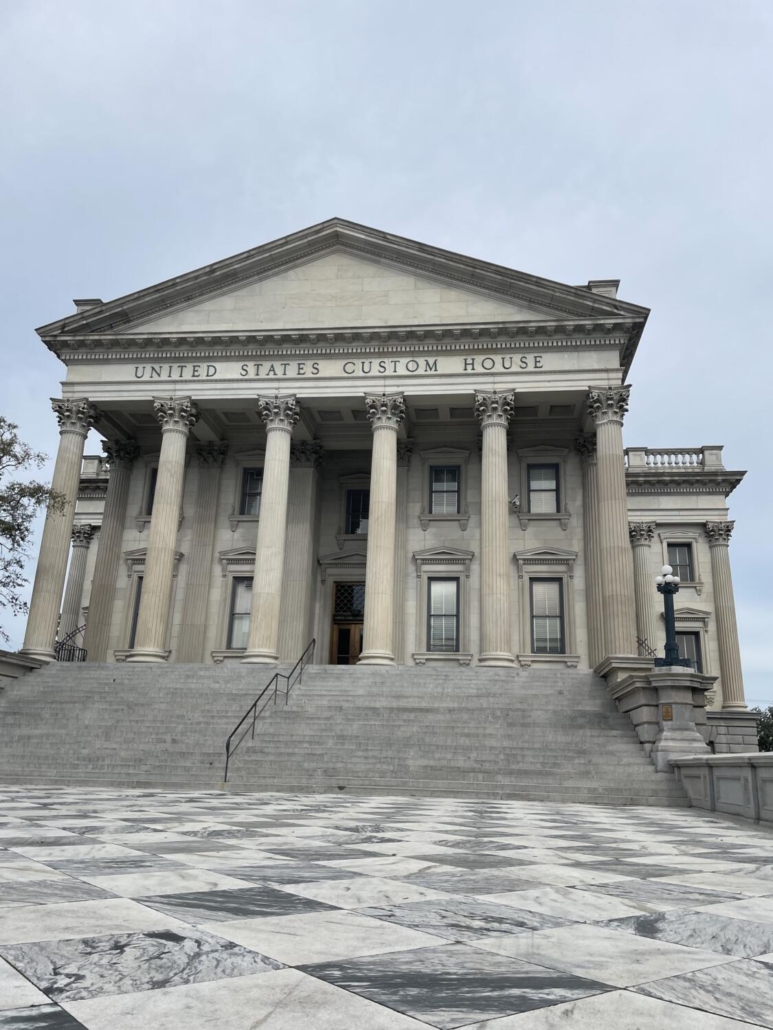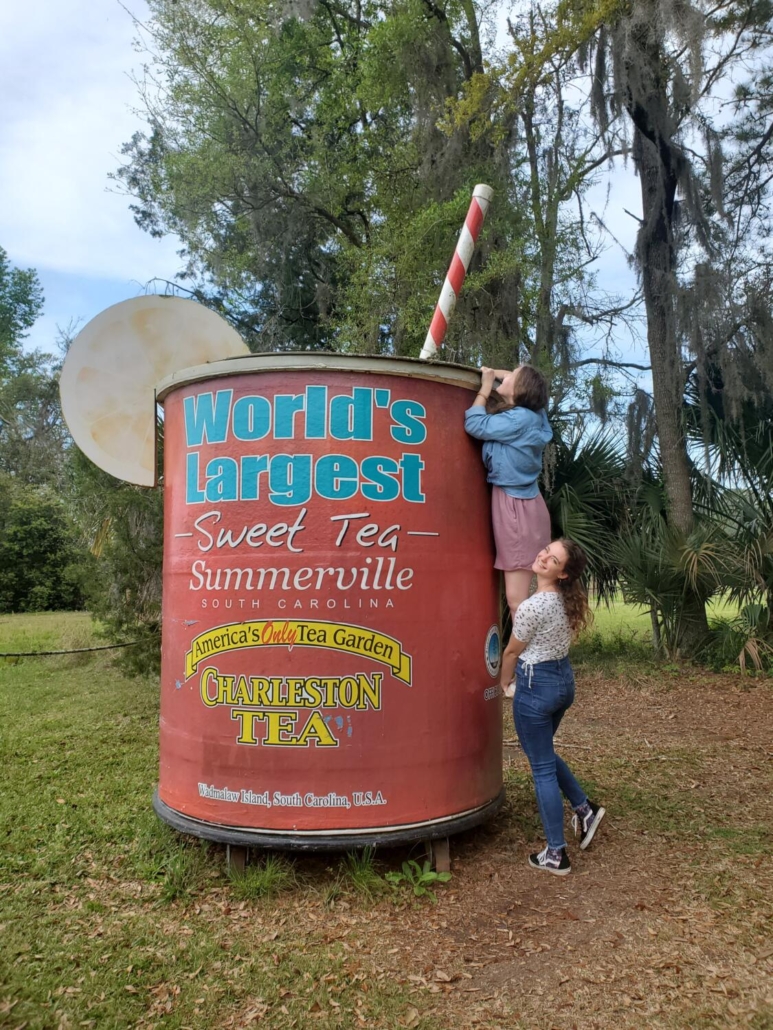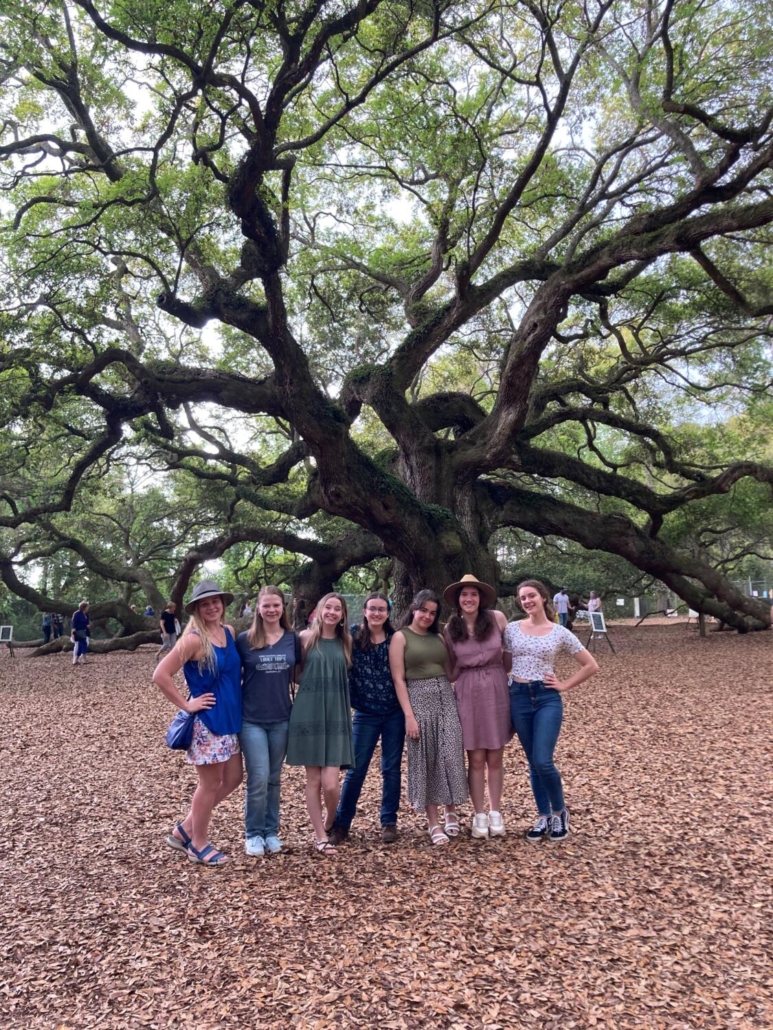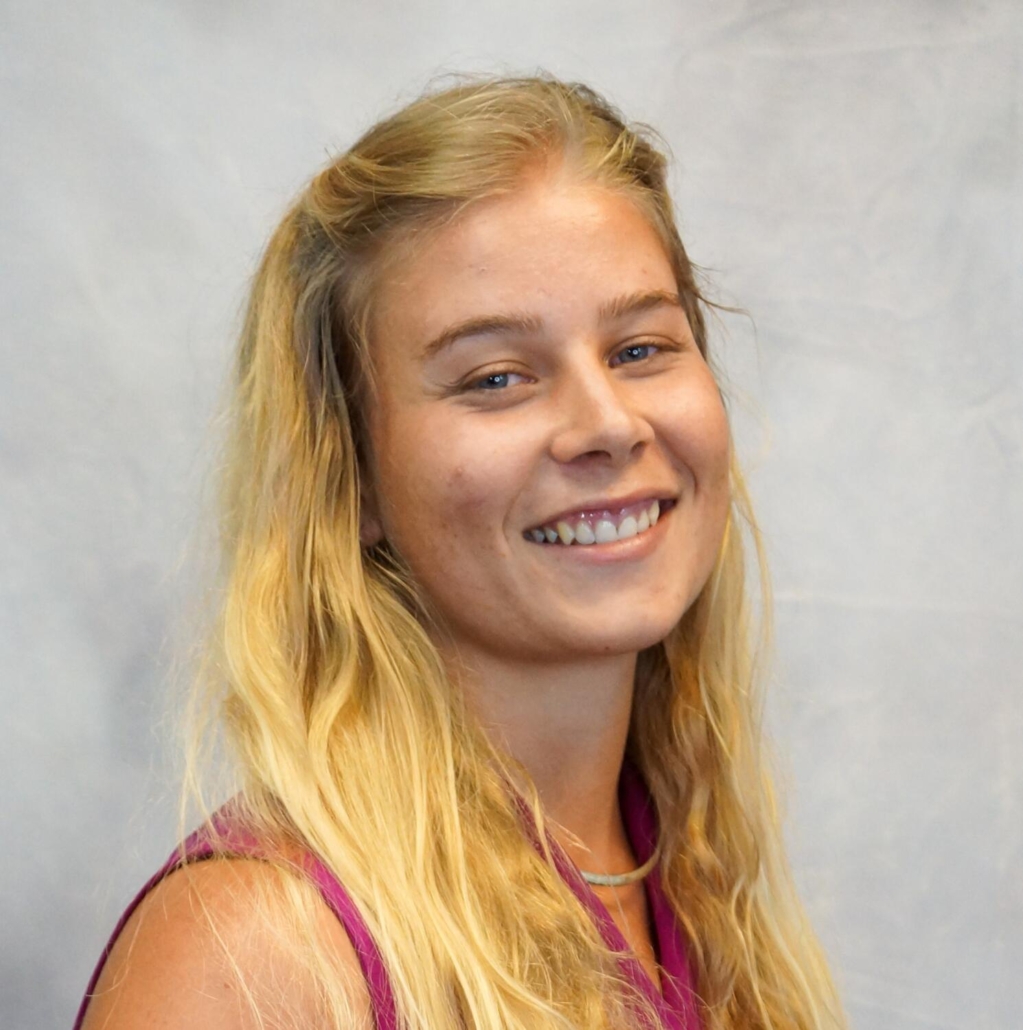Men’s Training Trip
Author: Kaleb Johnson | Student, Living Education – Charlotte, 2022-23
Estimated reading time: 5 min.
Smartphone Users, Try our mobile friendly version!
Continuing the yearly tradition, the men in the Living Education program went hiking.
The men in the Living Education program went on an overnight hiking trip, traversing 16 miles of Appalachian trail between Carvers Gap and I-19E. Overall, the trip was two days long—eight miles on each day—with a campsite at Little Hump mountain.
Day One: Hiking from Carvers Gap to Little Hump Mountain
We arrived at Carvers Gap, eight souls in all—Andrew McNair, David Smith, Jontavius Mincey, Kaleb Johnson, Nathan Kroon, Mr. Penman, Mr. McNair, and of course, Mr. McNair. We broke into two groups. Mr. Penman took Andrew, Jon, and Nathan. Mr. McNair, accompanied by Mr. McNair, took David and Kaleb—I should clarify that it was Rod McNair and Jonathan McNair. However, I rather enjoy referring to them simply as Mr. McNair and Mr. McNair. I’m a simple man with a simple sense of humor.
After grabbing our packs and taking some pictures, we set off on the trails. Mr. Penman’s group went first, and Mr. McNair’s group waited about 15 minutes before proceeding. After a few miles, Mr. McNair’s group came upon a fork in the trail. One path was a dead-end trail that led to Grassy Ridge, which had a commanding view of the neighboring mountains and valleys. David and I made the trek up the trail to Grassy Ridge. When we returned to the Appalachian trail, we found Mr. McNair and Mr. McNair resting quite comfortably. Around this time, both of the groups had summer sausage, tortillas, and mayonnaise for lunch. One group saved some of their summer sausage, and one group pressured their students into eating all of the food so Mr. McNair did not have to carry it anymore. The first mayonnaise and summer -sausage wrap was great. The fourth was less great. Excessive mayonnaise and hiking don’t go well.
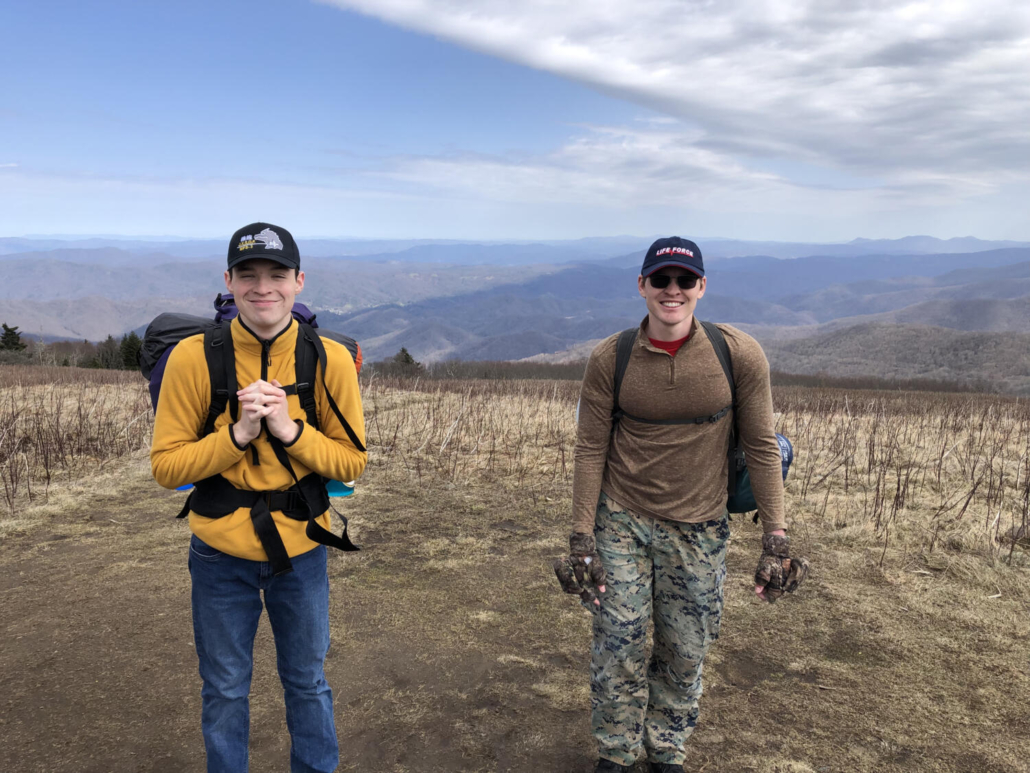
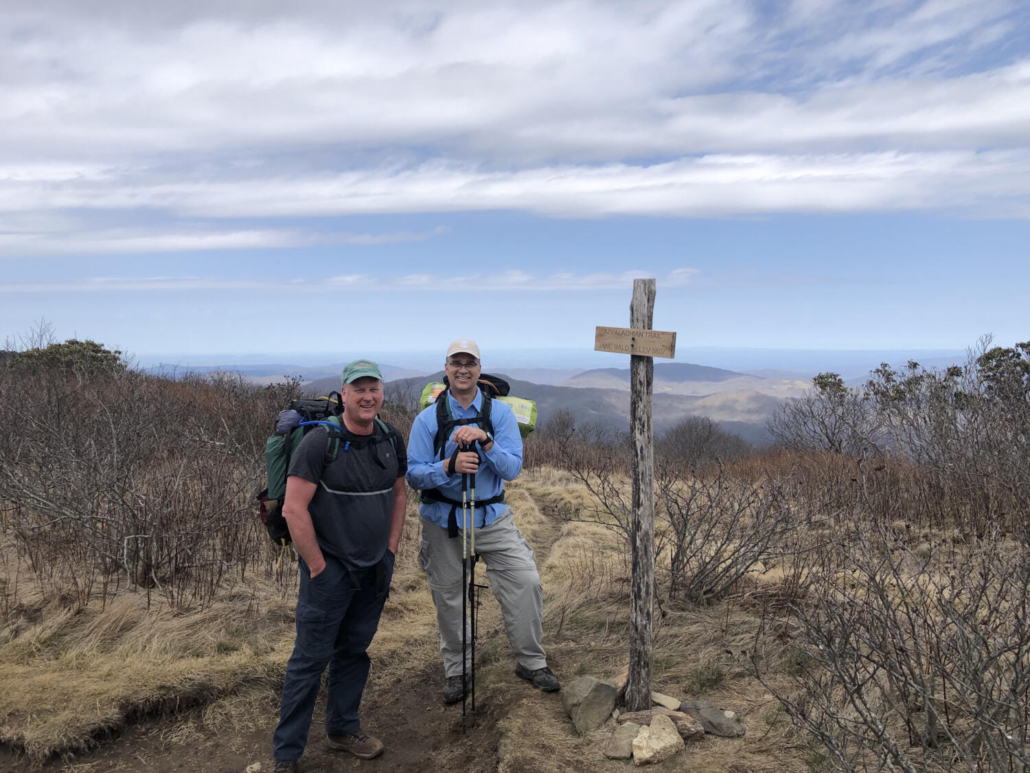
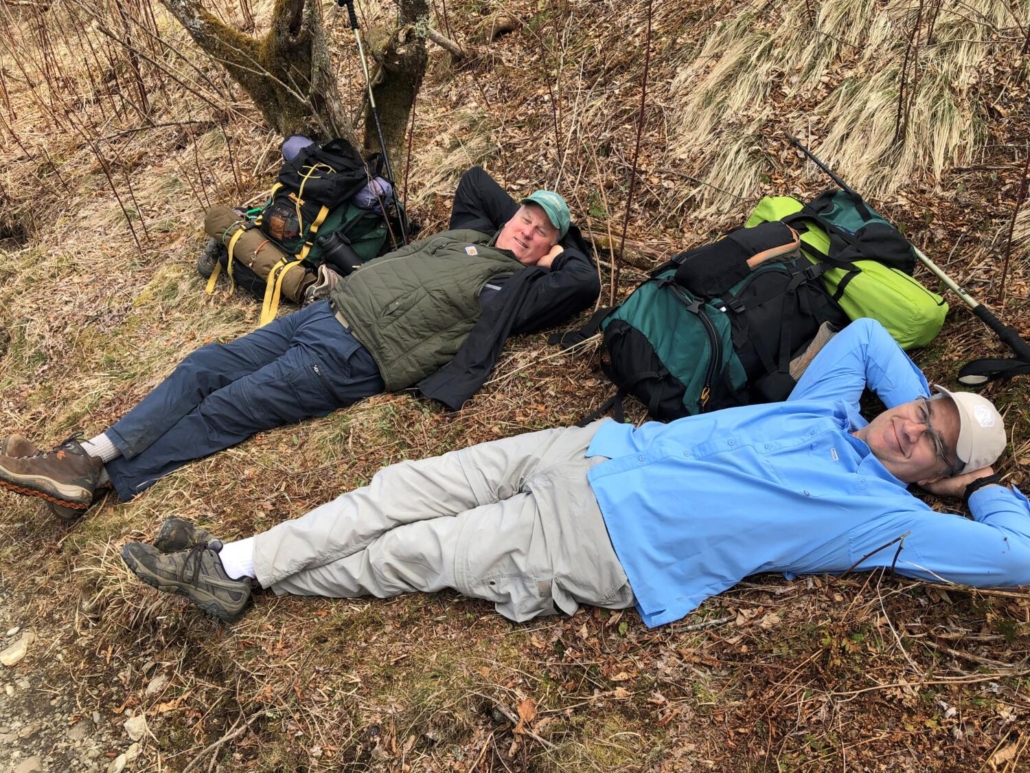
After a few hours of trekking up and down mountains, enjoying stunning views, and getting exhausted by steep uphill sections of the trail, the students arrive at their campsite: little hump mountain. We decided not to camp at the top of the mountain, even though it had a fantastic view, because high winds were forecasted for the night. Instead, we camped a few hundred feet away at a site with rocks and trees to break the wind.
The Overnight Adventure
Having safely arrived, we established camp quickly. We forewent the wooden palisade and moat as we felt sufficiently secure from any forays that could occur. We started a small fire and proceeded to use propane-fueled water boilers to prepare the provisions for dinner. We feasted upon instant macaroni and cheese, instant mashed potatoes (which were really good), hot chocolate, and other refreshments. Mr. Penman’s group even added their leftover summer sausage to their macaroni and cheese. The other students could only watch wistfully.
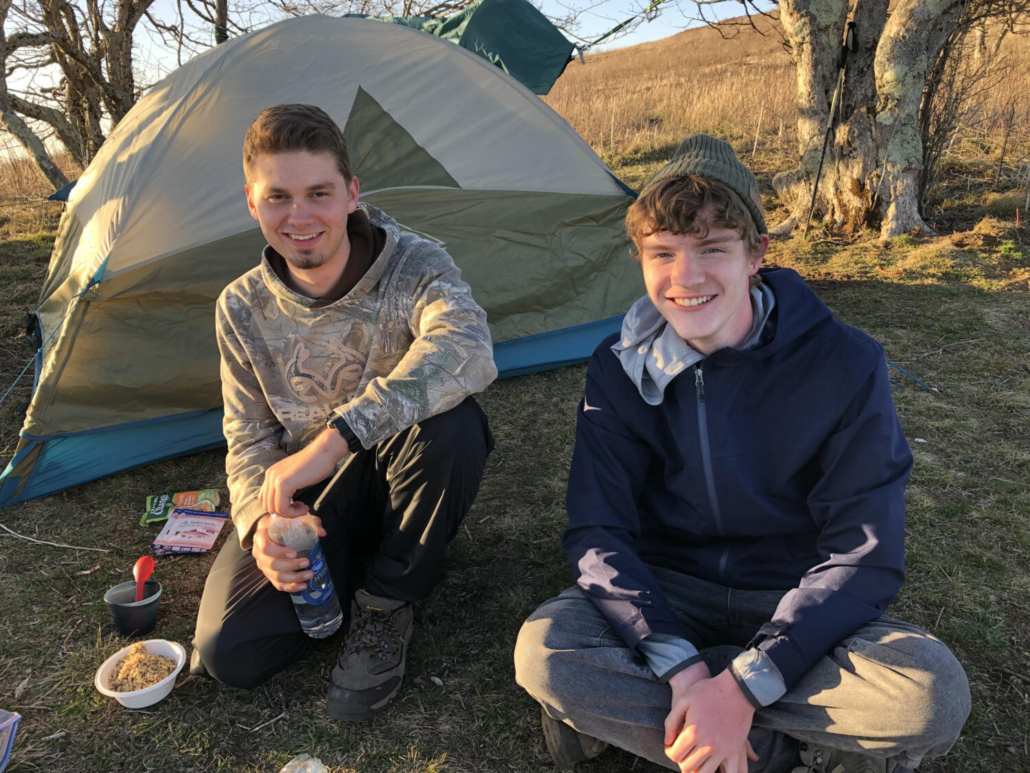
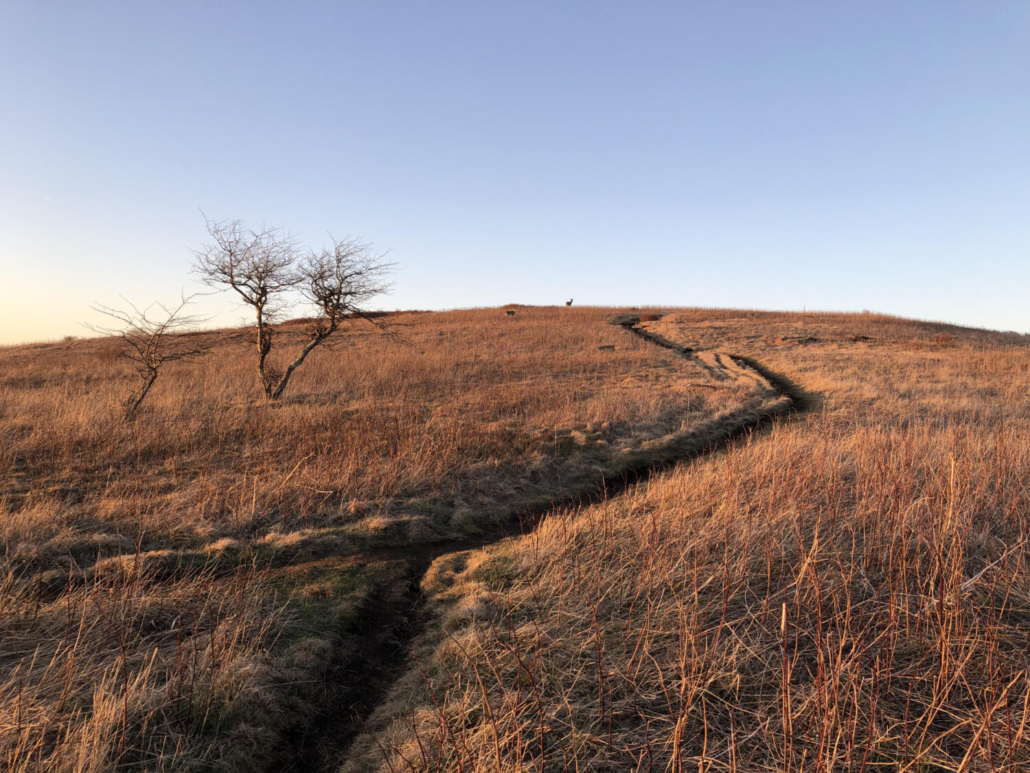
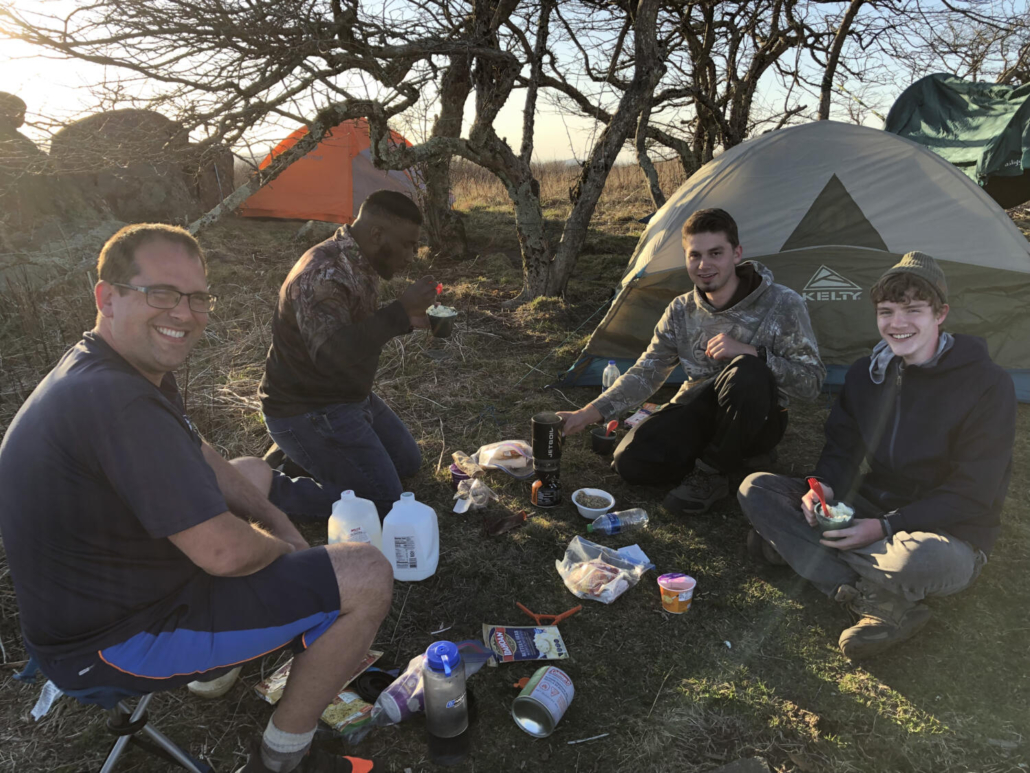
The night was unfortunately cold, and the students had grown soft and spoiled with their typical indoor sleeping—for some, it was even their first overnight camping. Thus, it turned out to be a restless night for most. Around 3 am, the storm came in. The gale blew tirelessly. The tent covers flapped noisily through the night. Yet it was oddly majestic. The wind blowing fiercely, the sporadic rain falling soothingly upon the tents, and the light chill of the night reminded us constantly that we were alive and, unfortunately, awake.
Day 2: Little Hump Mountain to I-29E
When morning came, we got up and started a fire. Fortunately, the rain had not lasted until sunrise, and the ground was relatively dry. We ate oatmeal, granola, and bagels. Then we packed up our tents and our packs and headed off. The previous day had been mostly uphill, and today would be mostly downhill. Or so they said. First we had to finish the climb to Big Hump Mountain. As I approached the base, I saw the side of the hill going straight up in front of me, and thought to myself, “I’m sure it’s not as bad as it looks from here.” I was right; it was worse.
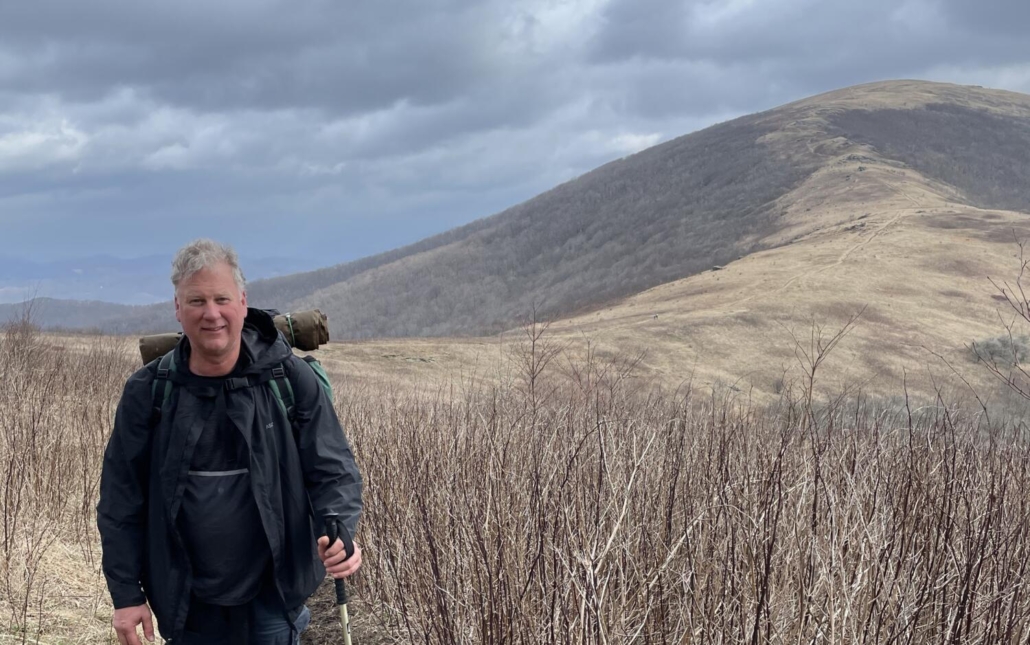
We climbed relentlessly up the trail. I recalled the poem “Excelsior” and thought of the allegory “Pilgrim’s Progress.” Somehow, I now understood these works much better. When we reached the top, I saw my favorite sight of the whole trip: a trail winding off in the distance, all of it downhill.
The remainder of the day was a picturesque walk through the woods. In this area, the Appalachian trail is full of switchbacks, carrying us carefully down the mountain to the road. It was a marvelous section of forest, shaded by tall trees and filled with large rock outcroppings. Within a few more hours, we made it to I-29E to the truck we had left there earlier.
Conclusion
The section of the Appalachian trail we hiked was fantastic. The beginning was filled with majestic views of the foothills sprawling as far as the eye can see. The end was adorned with a mossy and tranquil forest. Overall, the trip was 16 miles—not too difficult, and a great experience. It was a perfect place for an overnight hiking trip!
Read what the ladies in the Living Education Charlotte did instead of a hiking trip: A Ladies Weekend in Charlotte.
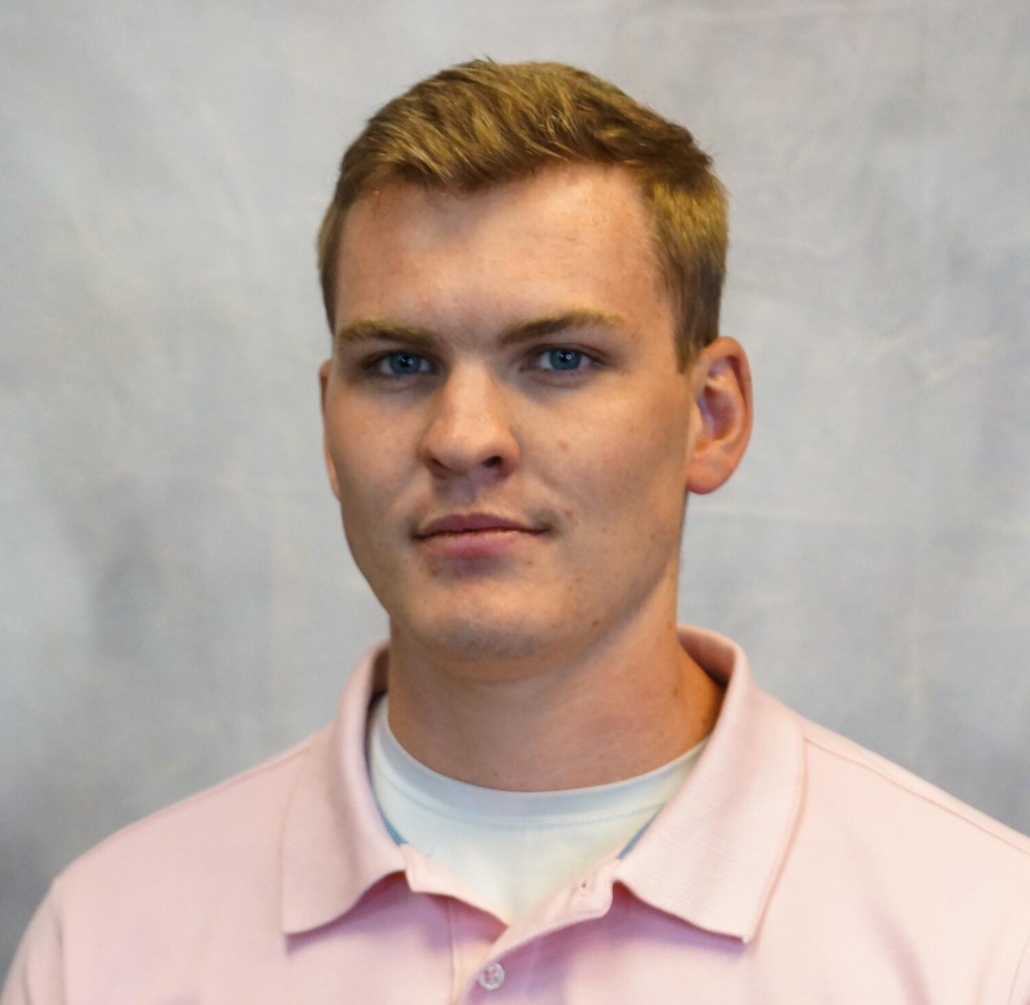
Kaleb Johnson is a student in the Living Education-Charlotte Program. He graduated with a degree in Chemical Engineering from the University of Alabama in Huntsville in the spring of 2022. In addition, Kaleb enjoys writing, video-making, trying new activities (anything and everything), playing chess, and debating (it’s not arguing!) with people. He currently works in the Living Education department producing written content & videos and helping with a variety of other projects.



